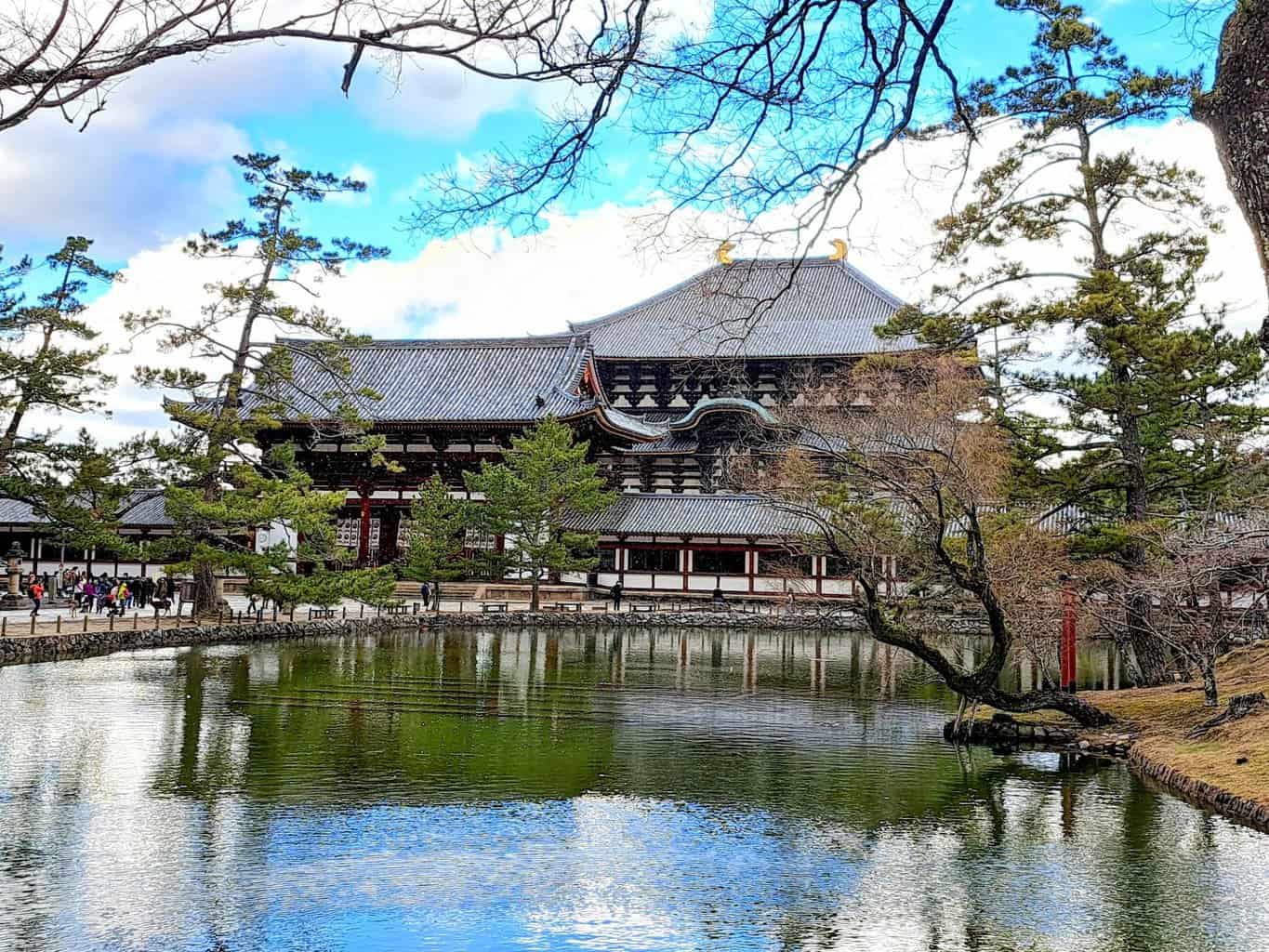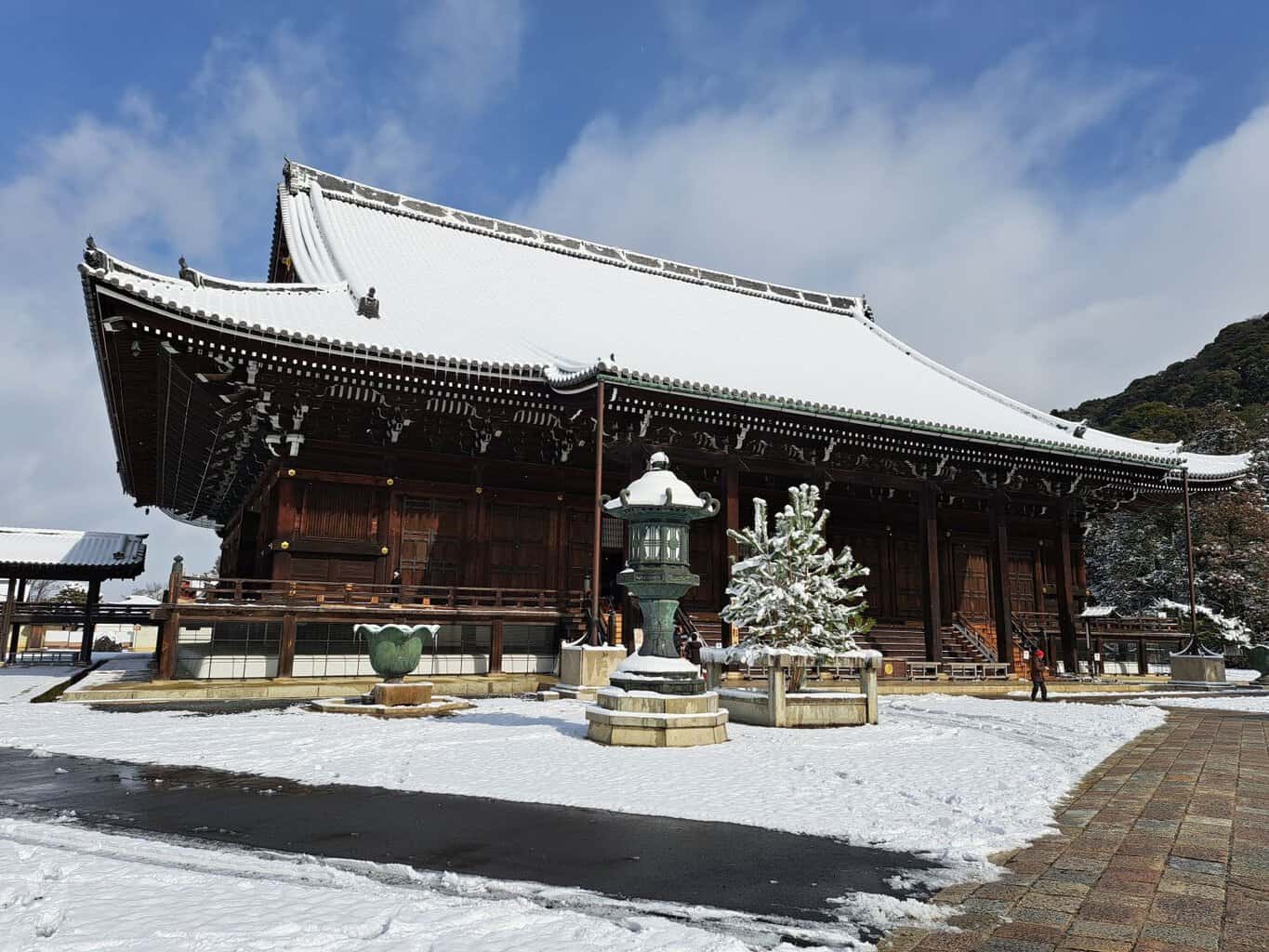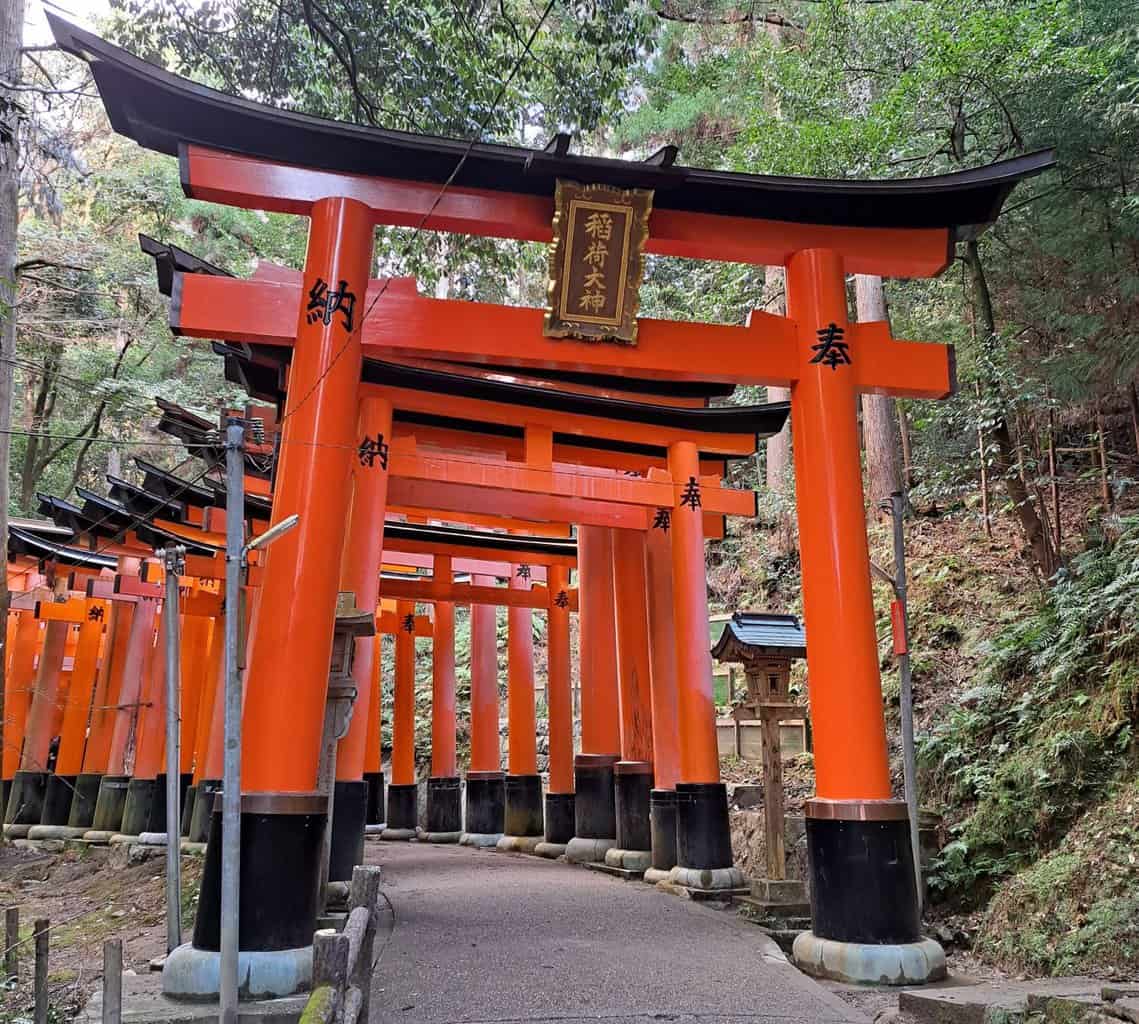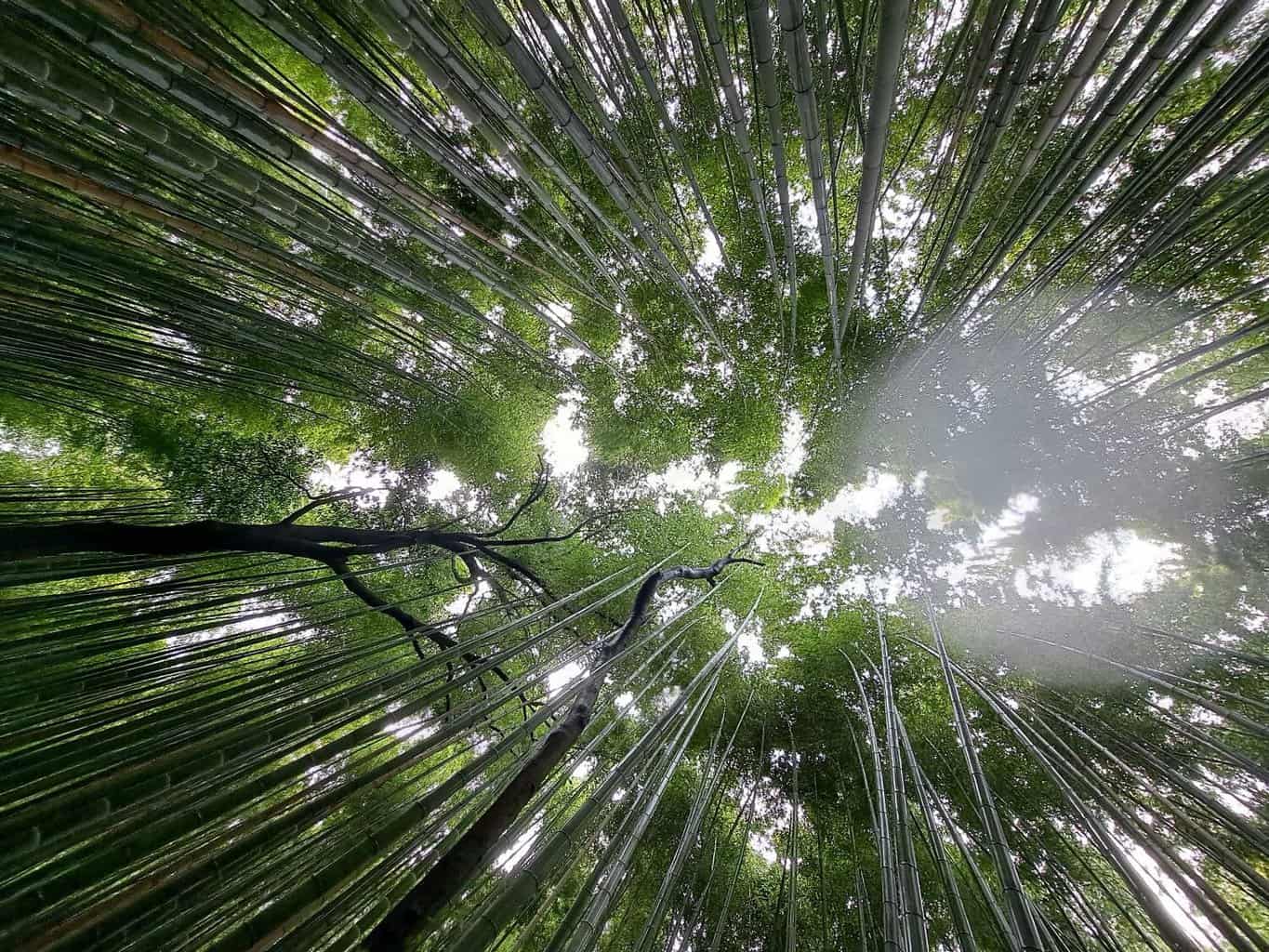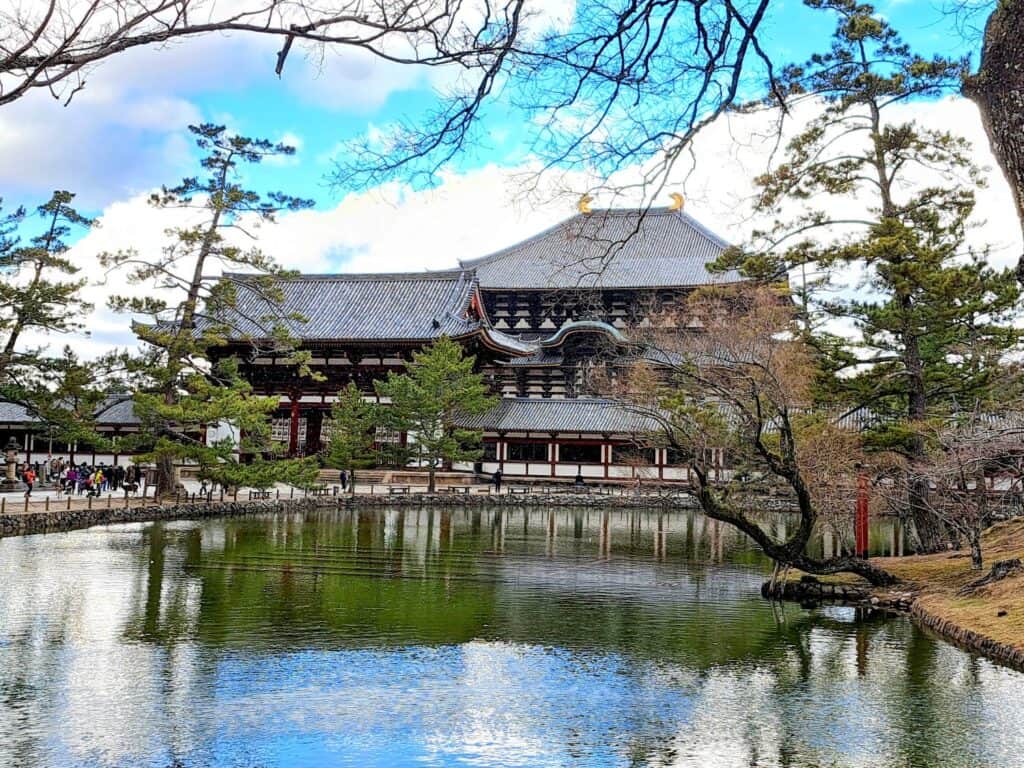
This post may contain affiliate links. I will receive a small commission if you use these links.
Nara Deer Park in the Winter
Nara Deer Park is one of the most visited parks in the Central Kansai region of Japan and is a popular day trip from both Kyoto and Osaka.
The main ahttp://kyotottraction of Nara Park is the hundreds of wild deer that roam the parklands. However, there are plenty of other sites to see within the park, too. Here’s a full guide to help you make the most out of your day trip to Nara Park, even in the winter.
Contents
When is the best time to visit Nara Deer Park?
Nara is a great place to visit year-round. Although parks are normally thought of as summer activities, winter is also a good time to visit. Winters in Japan can be very cold and often snowy, but Nara park is a beautiful place to visit in the winter months. And if snow has fallen, it can look even more magical.
How much does it cost to visit Nara Deer Park?
There is no entrance fee for Nara Park, you can visit free of charge all year round. It is one of the best free activities for those visiting Japan on a budget.
How to get to Nara Deer Park
Nara Park is a great place for a day trip from the popular tourist cities of Kyoto and Osaka. It is relatively easy to get to Nara Park by car or by train.
Travel to Nara by Train
If you travel by train, note that the station is a 20 minute from the park. But it is an easy walk straight up the main road, passing many shops and cafes along the way. There is also a local loop bus which will take you from the train station to the park entrance – get off at the Kasugataisha Omotesando stop for Nara Park.
Travel to Nara by Car
If you have hired a car to explore Japan, there are several parking lots located around the deer park. Make sure that you check the terms and conditions of parking before you leave your car to avoid any charges.
Osaka to Nara
The best way to get to Nara deer park from Osaka is by train. There are a couple of options, but if you are going from Osaka station, the best route is to catch the Osaka Loop line to Shin-Imamiya Station. From here, you change trains and get the JR Namba line to Nara station. You can also take the Yamatoji line to Nara station from the JR Namba station in the south of Osaka city. Both of these options take around 1 hour.
If you travel on a JR line train and you have a JR pass which covers this region, you should be able to use your pass on this journey (Please check before you travel).
For a slightly quicker (but more expensive) journey, you can travel on the Kintetsu-Nara Line from Namba station to Kintetsu-Nara Station. For further information on travelling to Nara Park from Osaka by train, check out this website.
Kyoto to Nara
Most people visit Nara Deer Park as a daytrip from Osaka, but you can travel very easily from Kyoto station to Nara Station on the direct Nara Line train, which takes just over 1 hour. In fact, as you don’t need to change trains when coming from Kyoto, it might even be considered more straightforward to visit Nara park from Kyoto!
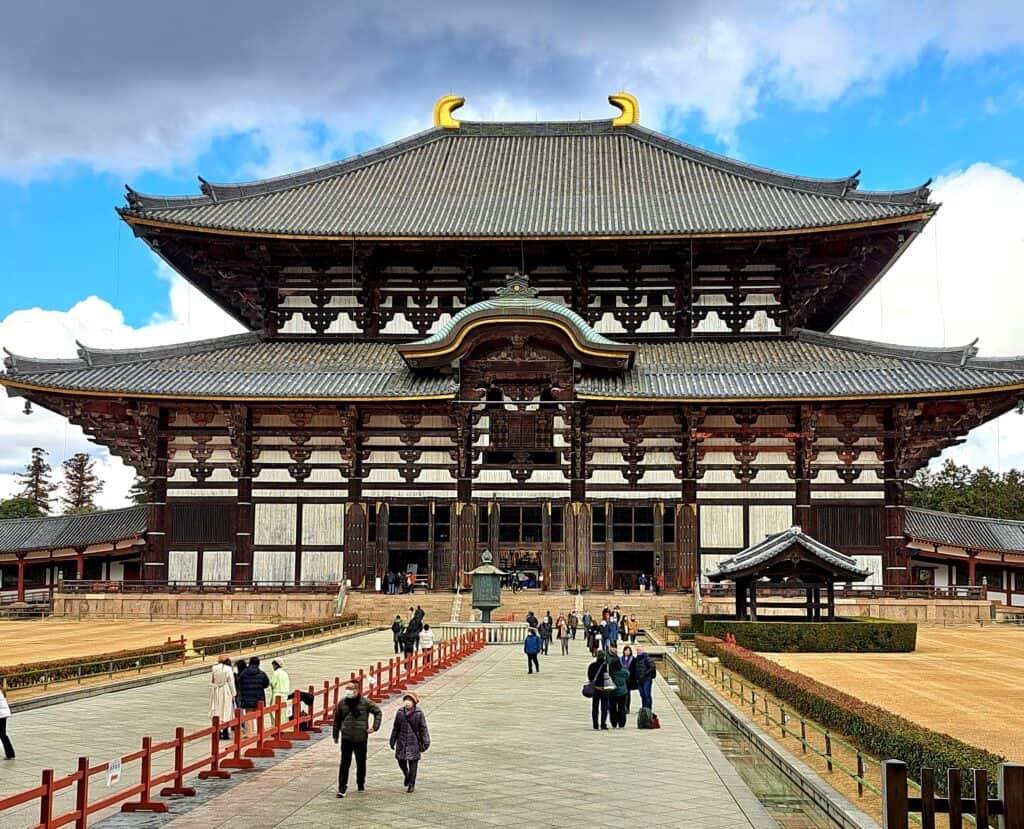
Nara’s sacred deer
The deer are allowed to roam freely throughout the park, and you will see them all around the temples too. Even in the winter months, there are so many deer wandering around. They are lovely to observe and take photos of, but be careful not to get too close. Give them space and do not pet them. Here’s a few more tips on the deer in Nara Park:
How did the deer get to Nara, and why are they sacred?
Legend states that one of the four gods of Kasugataisha Shrine rode a white deer to Mount Mikasa in Nara all the way from the north of Tokyo. Since then the deer in Nara Park have been considered sacred and are protected as such. Over the years the numbers of deer in the park have increased and today, there are approximately 1400 deer roaming here.
Can you feed the deer in Nara Park?
The deer in Nara Park are wild animals, however they have become used to humans and especially used to getting fed by humans, too. It is important that you do not feed the deer human food. Instead, you can buy special ‘deer crackers’ which are available at various kiosks and stalls throughout the park.
There is an argument that the deer should not be fed at all, as they are wild animals after all. But from what we were told, the crackers are not nutritious enough for the deer to rely on them for a full meal – they are considered a small snack and the deer would still need to hunt for their own food.
Are the deer safe?
The deer can get very impatient if they know that you have crackers and will snatch or try to grab them off you. Small children must be supervised and you should not tease the deer with the crackers – they will chase after you!
If they see you put your hands in your pockets, they will think that you have food and will run over. Equally if they smell crackers in your pocket or bag, they will bite your clothes or bag to try and get to them! The best thing to do if you do want to feed crackers to them is to do it as soon as you buy them! If they approach you and you do not have food, the best thing to do is to hold your hands up to show that you don’t have anything – they will soon leave you alone.
Also read: How to see deer on Miyajima Island – a daytrip from Hiroshima.
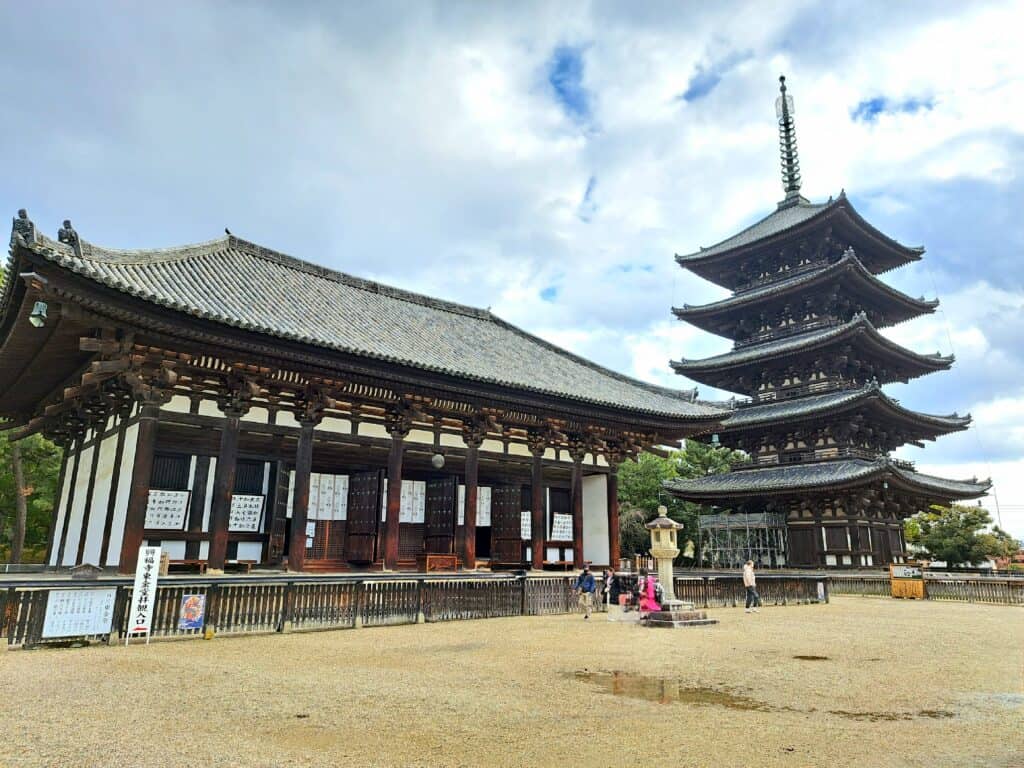
What else is there to see at Nara Park?
Nara Park Temples
There are many temples to admire as you stroll around Nara Park.
One of the most impressive temples in the park is Todai-ji Kondo Hakkaku Toro. Walking through the wooden gates of Todai-ji Nandaimon, head towards the pretty Todai-ji Kagami-Ike Pond and wander around, taking in the beautiful surroundings. You can visit the temple for a small additional fee, or simply stroll around the edge of the pond and admire the temple from afar.
Another must see temple in Nara Park is Kofuku-ji. This complex of buddhist halls, temples and pagodas is situated near the main entrance of Nara Park, just 15 minutes from Nara train station.
Museums at Nara Park
Located in the centre of the park is the Nara National Buddhist statue museum and the Nara Buddhist art museum. For details of exhibitions, opening times and fees, see here.
Yoshikien Garden
Tucked away on the edge of Nara Park is the peaceful Yoshikien garden, with a traditional wooden teahouse. There is no charge to enter the gardens and it is a lovely serene place to wander.
Eating in Nara Park
Around the edge of Nara Park are plenty of cafes and restaurants, as well as market stalls selling sweet treats and local street food, so you won’t go hungry. Be warned that the deer will hang around the food stalls so be on the lookout for any thieves trying to steal your food!
Tips for visiting Nara Deer Park
- Be careful of the deer, especially with young children. The deer can get aggressive if they are trying to get hold of food, especially their prized deer crackers!
- Cafes and restaurants are busy, especially if you are visiting on a weekend when local Japanese families will spend the day out together. Expect to wait for a table.
- Be vigilant if you have a picnic. If you are visiting in the summer months and plan to have a picnic in the park – make sure that you don’t leave food unattended and watch out for opportunistic deer!
- Wrap up – If you are visiting Nara Park in the winter, make sure that you wrap up. Japan can get very cold in the winter months and Nara Park is exposed, making it quite cold.
- Don’t rush – although the deer are the main attraction in Nara Park, there is so much to see in the large park, so take your time and enjoy!

